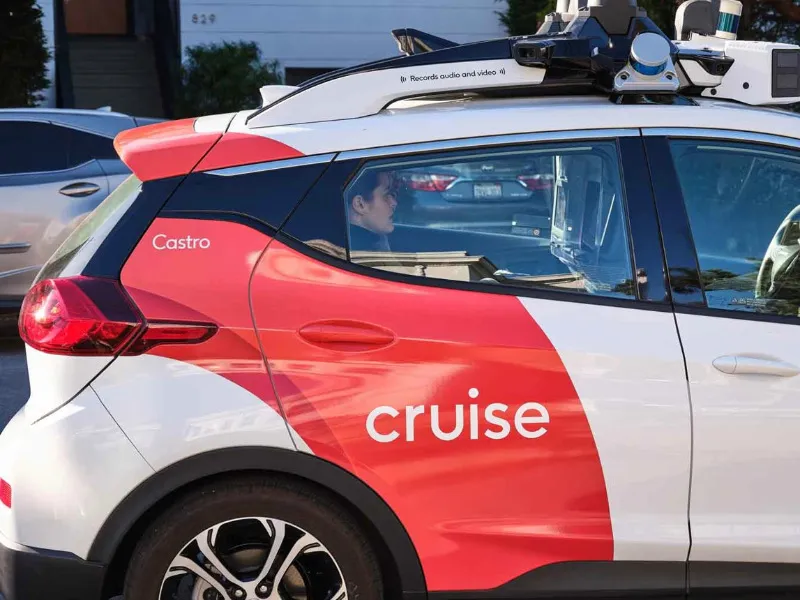- General Motors’ self-driving technology unit, Cruise, is planning a significant comeback.
- The company’s efforts to regain momentum and eventually charge for robotaxi rides by 2025 signify a critical juncture in the race to develop viable autonomous driving systems.
OUR TAKE
It’s like a rollercoaster ride for Cruise. Same example as Tesla’s Autopilot faced some heat after accidents, but Cruise seems determined to bounce back. Remember how Waymo also hit a few speed bumps early on with their self-driving tech? It’s all part of the game, I guess. Cruise’s move to Phoenix for supervised testing feels like a smart step back to basics, focusing on safety first. And ditching the Origin for a more conventional Bolt? Smart pivot, might help ease public concerns. But let’s see if they can really pull off a comeback by charging fares in 2025. Time will tell if they’ve learned from past mistakes and can rebuild that trust.
–Miurio huang, BTW reporter
What happened
General Motors’ self-driving technology unit, Cruise, is planning a significant comeback. According to Bloomberg News, Cruise aims to resume fully autonomous rides later this year and start charging fares by early 2025. This ambitious timeline follows a tumultuous period for the San Francisco-based company, which has been recovering from a major setback. Last year, one of Cruise’s robotaxis struck a pedestrian and dragged her for 20 feet (6 meters), leading to a suspension of its autonomous vehicle operations in California.
In response to the incident, Cruise resumed operations in April 2023 with a small fleet of human-driven vehicles in Phoenix, Arizona. Despite these efforts, the company’s authority to provide passenger service in autonomous vehicles in California remains suspended. Cruise is currently focusing on supervised autonomous testing in Phoenix, Dallas, and Houston as part of its strategy to rebuild trust and enhance the safety and performance of its autonomous vehicles.
A spokesperson for Cruise emphasised that safety remains their guiding principle as they expand into driverless operations, although no specific timeline has been provided. In a shift from previous plans, Cruise announced earlier this week that it would focus on developing a next-generation Chevrolet Bolt instead of the previously planned Origin vehicle, which was designed without a steering wheel or pedals.
Also read: AI tools revolutionise accessibility for the visually impaired
Also read: MIT unveils a new way to simulate training for home robots
Why it’s important
The journey towards fully autonomous driving systems and robotaxis is both arduous and expensive, fraught with engineering and regulatory challenges. Cruise’s progress and setbacks illustrate the broader industry’s struggle to bring self-driving technology to market. The company’s efforts to regain momentum and eventually charge for robotaxi rides by 2025 signify a critical juncture in the race to develop viable autonomous driving systems.
Cruise’s ongoing investigations by the National Highway Traffic Safety Administration, the U.S. Department of Justice, and the Securities and Exchange Commission add another layer of complexity. These probes highlight the heightened scrutiny and regulatory challenges that self-driving technology companies face.
Despite these hurdles, the potential benefits of autonomous vehicles remain significant. Autonomous vehicles promise to reduce traffic accidents, improve mobility for those unable to drive, and offer more efficient transportation solutions. However, incidents like the one involving Cruise’s robotaxi underscore the importance of rigorous testing and regulatory oversight to ensure the safety and reliability of these systems.
Cruise’s strategic pivot to focus on a next-generation Chevrolet Bolt indicates a pragmatic approach to advancing autonomous technology while addressing safety concerns. The industry will be closely watching Cruise’s progress as it strives to meet its 2025 target for fare-charging robotaxi rides.
Cruise’s journey reflects the broader challenges and opportunities in the autonomous vehicle industry. Their efforts to resume fully autonomous rides and introduce fare-charging services by 2025 could set a precedent for other companies in the space, provided they navigate the regulatory and safety hurdles effectively.

